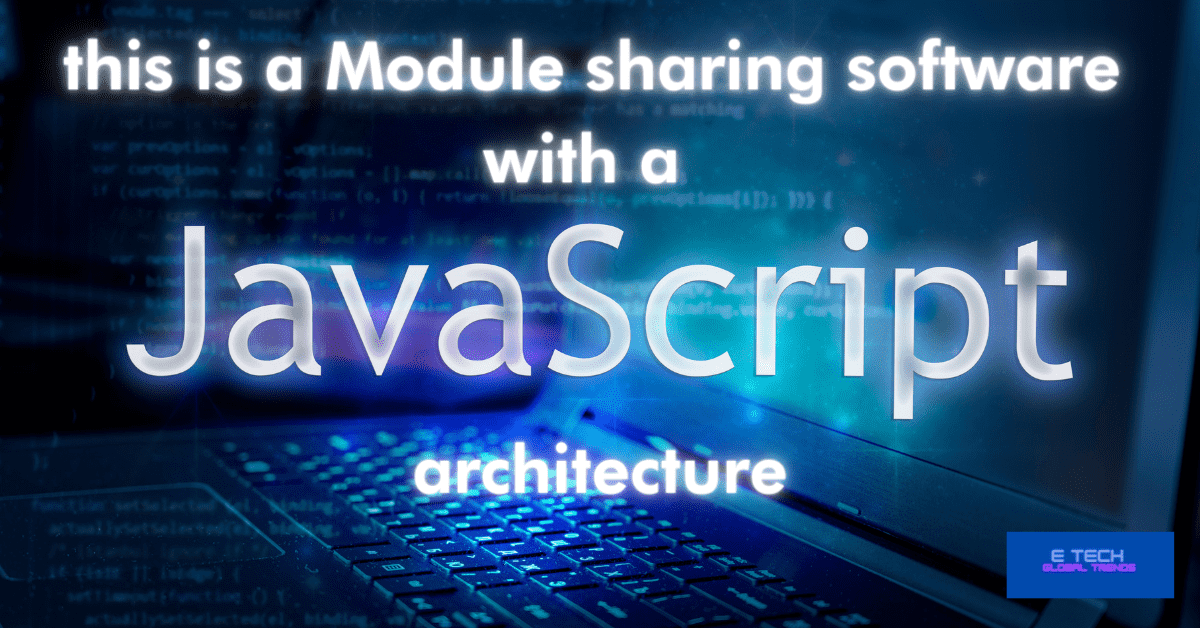Module Federation
Hello friends, we have met again. And today we are focusing on trending information technology. So, I hope you will be impressed by knowing this present. Well, shall we get into work? What is Module Federation? In simple terms, this is a Module sharing software with a JavaScript architecture. And what for? it is to share code between two separate codebases and dependencies. thanks to the JavaScript architecture. This is what our today’s discussion is- Module Federation. Particularly the architecture employs micro frontends.
What is the term here “Module”?
Yes, this is the starting word. And it’s a programming term. A module is a block of code introduced to a program in its entirety or to be reused repeatedly. This means in computer software, focuses on a particular task. In addition to a primary program, work as a ‘module’.
“Micro Frontends”? What is it doing?
If you know first what the Frontend is, it is easy to get in. The “client-side” of the application is the common term for it. The Frontend is there for everything. the user sees when engaging with the website or app, including the navigation menu, buttons, graphics, graphs, and pictures.
So, here;
What is a micro frontend?
It’s something like this. The Micro frontends break down an App’s complete frontend into smaller ones. That is to manage components and cooperate comfortably
Micro frontends are a novel design pattern that consists of web application user interfaces (UI). that is the one we are talking about,= “Frontends”. They consist of small, semi-independent pieces that create several teams using various technologies. Micro-frontend designs resemble back-end architectures also. in which back ends are built from semi-independent microservices.
What do we need micro frontends here?
The following are some advantages of micro-frontends:
- Scalability of the team: Different teams can work separately to support various systems. This enables us to scale the task over numerous teams and divide it out.
- Single responsibility: This will make it possible for each team to focus on building only one component.
I know this simple clarification is not enough for you to easily digest.
What is the Module Federation?
Running Micro Frontends is possible because of the module federation. Because they can automatically share. standard dependencies like Angular or the Auth0 module don’t need to be loaded several times. This is also crucial for communicating information like user accounts or global filters.
However, this is only one aspect of the problem when breaking up software systems. Users may not agree with this notion, despite how much we developers might appreciate it. They want an integrated solution and are not interested in beginning multiple frontends.
In light of this, we must devise a method for making all of our micro frontends seem like a single-page)application. In a shell program, this frequently entails loading micro frontends.
The sample given here, for instance, imitates a straightforward shopping system. One of its shipping-related micro frontends:
Micro frontend development is more effective. because of module federation design. which allows for dynamic code sharing amongst micro frontends. It eliminates the requirement for ‘external proprietary library management or code duplication. at this point, no need to go into the deep previous matter.
About 3,500 people have rated the new architecture on GitHub.
By using a micro frontend design. developers may create frontends that are more;
- Interactive,
- manageable
- scalable.
Large frontend projects in particular benefit more from using micro frontends. So, Micro frontends enable developers to specifically target what they want to alter without even “touching” the other components of the architecture. So, then it opposes dealing with the full frontend architecture. which is for updates or modifications.
Because of this, organizations like Microsoft, Starbucks, IKEA, and Fiverr use this. Others are depending more and more on micro frontends for their apps.
JavaScript: What is it?
You, as a client, request a website from a server, which is another pc that saves the website. when you visit a website. The server gives you a ton of files, maybe including HTML and CSS files as well as possibly some JavaScript files.
then the server and you stop exchanging messages.
In what ways do you
“interact” with the website then?
Well, the majority of the website’s layout and design are provided via HTML and CSS. You can click links and submit forms. However, JavaScript enables the website to perform tasks like;
- form validation,
- creation of graphic effects, etc.
All of the files that the server sends you are interpreted in large part by your browser. JavaScript makes it possible for you to engage with the website without having to talk to the server. Because of this, JavaScript is a scripting language used by the client.
You may see how easy and important this is…
We refer to the language’s characteristics as being weakly typed and dynamic. The architecture of the language allows you to change it so that it behaves like a functional or class-based language without requiring us to define the sorts of variables we generate.
However, because it does not hold your hand during debugging. So, this is a challenge.
JavaScript is often that, then. However, recently it has been popular to utilize it as a server, much like;
- PHP,
- Python,
- Ruby,
- Node.js servers can also program using JavaScript.
This makes it possible to use JavaScript on both the server and the client, which simplifies tasks.
Hope you are still reading…
There’s still more, though.
Like MySQL and other database systems, as an example, MongoDB is a system that you can interface via the command line utilizing…
you can guess it… yes, that is JavaScript.
What are the 10 most important JavaScript concepts for beginners?
- To build dynamic websites and web applications, you can use the programming language JavaScript.
- To create a “.js” file extension, JavaScript code is created in text editors like Notepad or TextEdit.
- You can use servers, web browsers, and your machine to run JavaScript.
- Variables, data types, operators, loops, conditionals, functions, and objects are among JavaScript’s essential features.
- Animation, AJAX live updates to web pages, event management, and support are all features of JavaScript.
- You can immediately insert JavaScript code into the HTML code to use it on a web page.
- As an alternative, you can use the src attribute to link to an external JavaScript file<script> tag.8.
- This HTML <script> tag consists of JavaScript code in the head section of the web page. By default usually.
- Of course, You can type your JavaScript code in the body section. itself. on your web page. your code is now more visible and pretty easy to debug.
- When you work with newer versions of JavaScript like (ECMAScript 6+), it is better to use a transpiler like Traceur or Babel.
Above all, JavaScript is therefore a particularly dynamic programming language. Isn’t it?
Conclusion
In this article, we were trying to offer you partial knowledge of what a module-sharing task is. As well as the base of a module. That is Javascript. And how it interacts as a “module share’. We consider only the fundamentals. We can include some in-depth programming concepts further. If you wish to read more… comment, please. Depending on your interest, we hope to update this article and add the latest information periodically.so, it’s a surprise, if you can suggest which areas you‘d like to read.
Good luck!
Read more on related topics; Qiskit: latest SDK insights, GitOps: cloud technology trend







